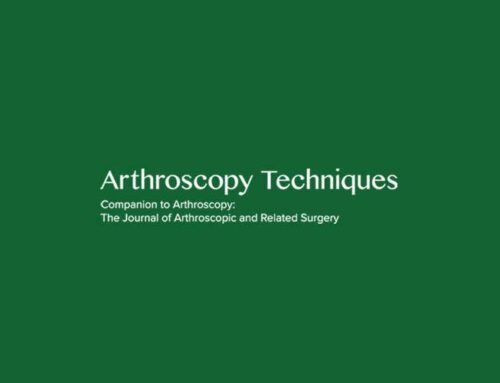Authors
Edward C. Beck, MD, MPH*, Justin Drager, MD, MS, FRCSC, Benedict U. Nwachukwu, MD, MBA, Jonathan Rasio, BS, Kyleen Jan, BS, Jorge Chahla, MD, PhD, Shane J. Nho, MD, MS
Abstract
Background:
Hip arthroscopy for the treatment of femoroacetabular impingement syndrome (FAIS) in patients with borderline hip dysplasia (BHD) is becoming a more common practice. However, the literature on achieving meaningful outcomes at midterm follow-up, as well as predictors of these outcomes, is limited.
Purpose:
To (1) compare the rates of achieving meaningful clinical outcomes between patients with and without BHD and (2) identify the predictors for achieving clinical success among patients with BHD 5 years after undergoing hip arthroscopic surgery for FAIS.
Methods:
Data from consecutive patients who underwent primary hip arthroscopic surgery with routine capsular closure for the treatment of FAIS between January 2012 and August 2014 were collected and retrospectively analyzed. Patients with BHD (lateral center-edge angle [LCEA] 20°-25°) were matched 1:2 by age (±1 year) and body mass index (BMI; ±5 kg/m2) to control patients with normal acetabular coverage (LCEA 25°-40°). Data collected included baseline and 5-year postoperative patient-reported outcomes. The minimal clinically important difference (MCID) and patient acceptable symptom state (PASS) were calculated for each patient-reported outcome measure and compared between the 2 groups. A binary logistic regression analysis was used to identify significant predictors of achieving the MCID and PASS in the BHD group.
Results:
The MCID in the BHD group was defined as 9.6, 14.1, and 9.5 for the Hip Outcome Score–Activities of Daily Living, Hip Outcome Score–Sports Subscale, and modified Harris Hip Score, respectively. Threshold scores for achieving the PASS in both groups were 90.9, 76.6, and 81.9, respectively. A total of 88 patients were identified with having BHD and were matched to 176 controls. No statistical differences were identified for age, BMI, or sex. Both the BHD and the non-BHD groups had statistically significant increases in patient-reported outcome scores over the 5-year period, but the difference in both groups was not statistically significant (P > .05 for all). There was no statistical difference in the frequency of patients in the BHD and non-BHD groups achieving the MCID (86.6% vs 85.2%, respectively; P = .804) or PASS (76.0% vs 73.7%, respectively; P = .675) on at least 1 outcome measure. The logistic regression model demonstrated that being physically active (odds ratio [OR], 27.59; P = .005) and being female (OR, 14.64; P = .025) were independent predictors of achieving the MCID, while running (OR, 11.1; P = .002), being female (OR, 7.6; P = .011), and a larger preoperative LCEA (OR, 2.3; P = .001) were independent preoperative predictors of achieving the PASS.
Conclusion:
The rates of achieving clinical success 5 years after undergoing arthroscopic treatment with capsular closure for FAIS were not significantly different between patients with BHD and those with normal acetabular coverage. Being physically active, running for exercise, female sex, and a larger LCEA were preoperative predictors of achieving clinical success at 5 years in patients with BHD.



